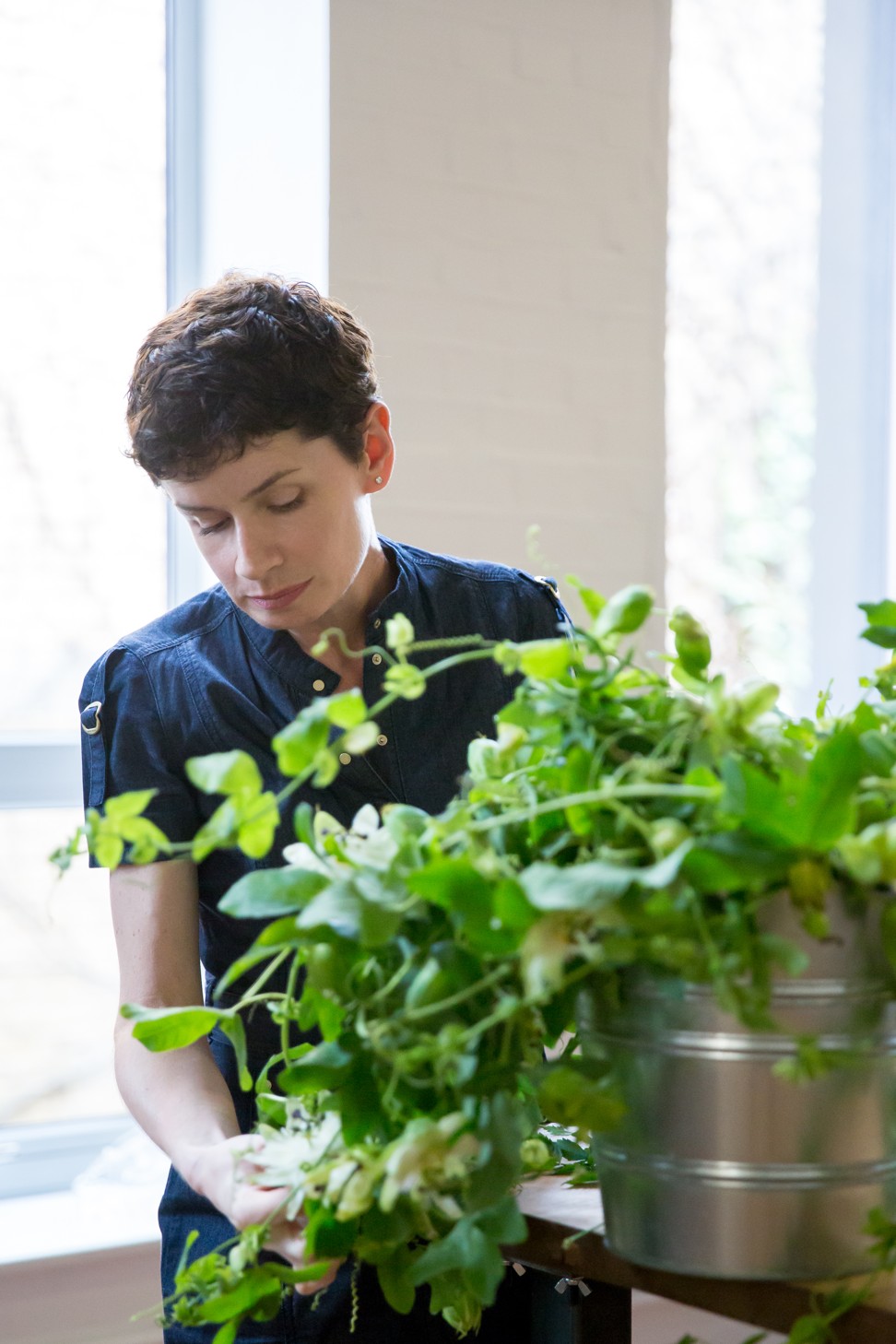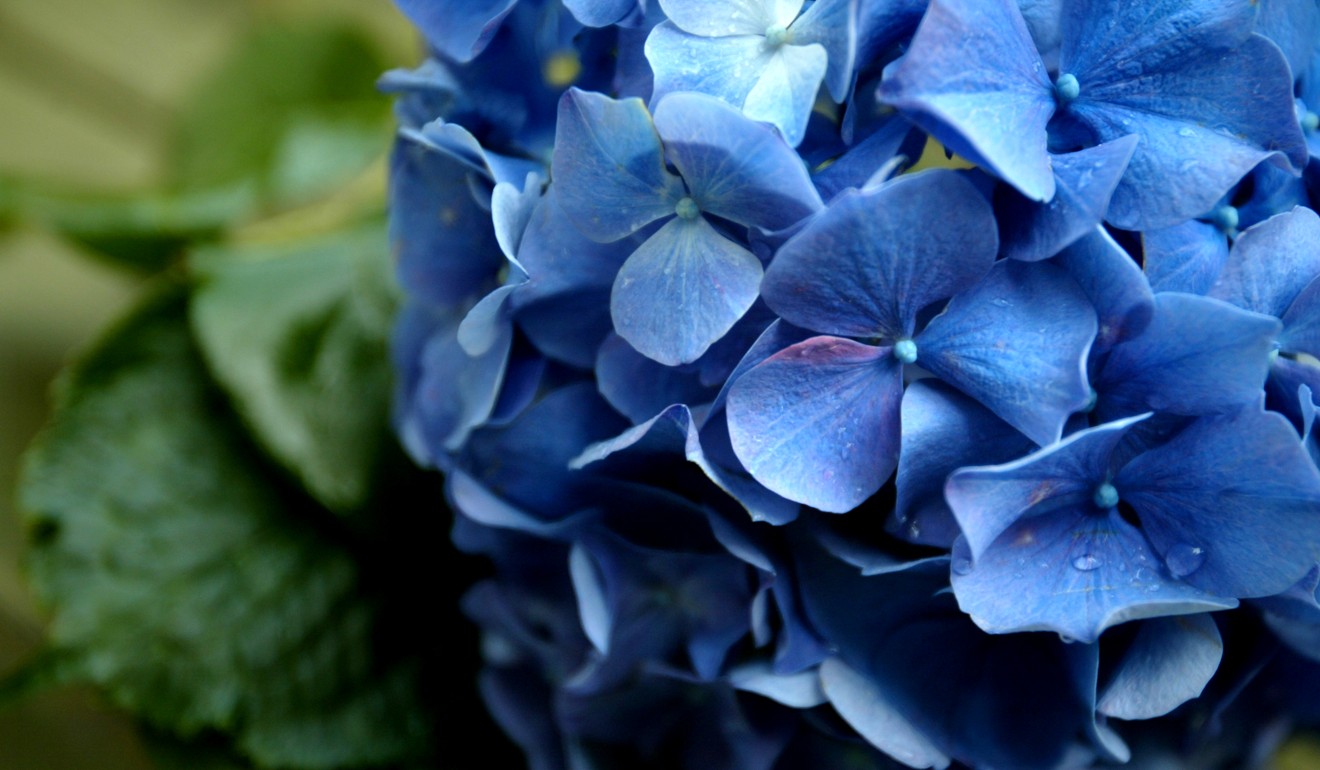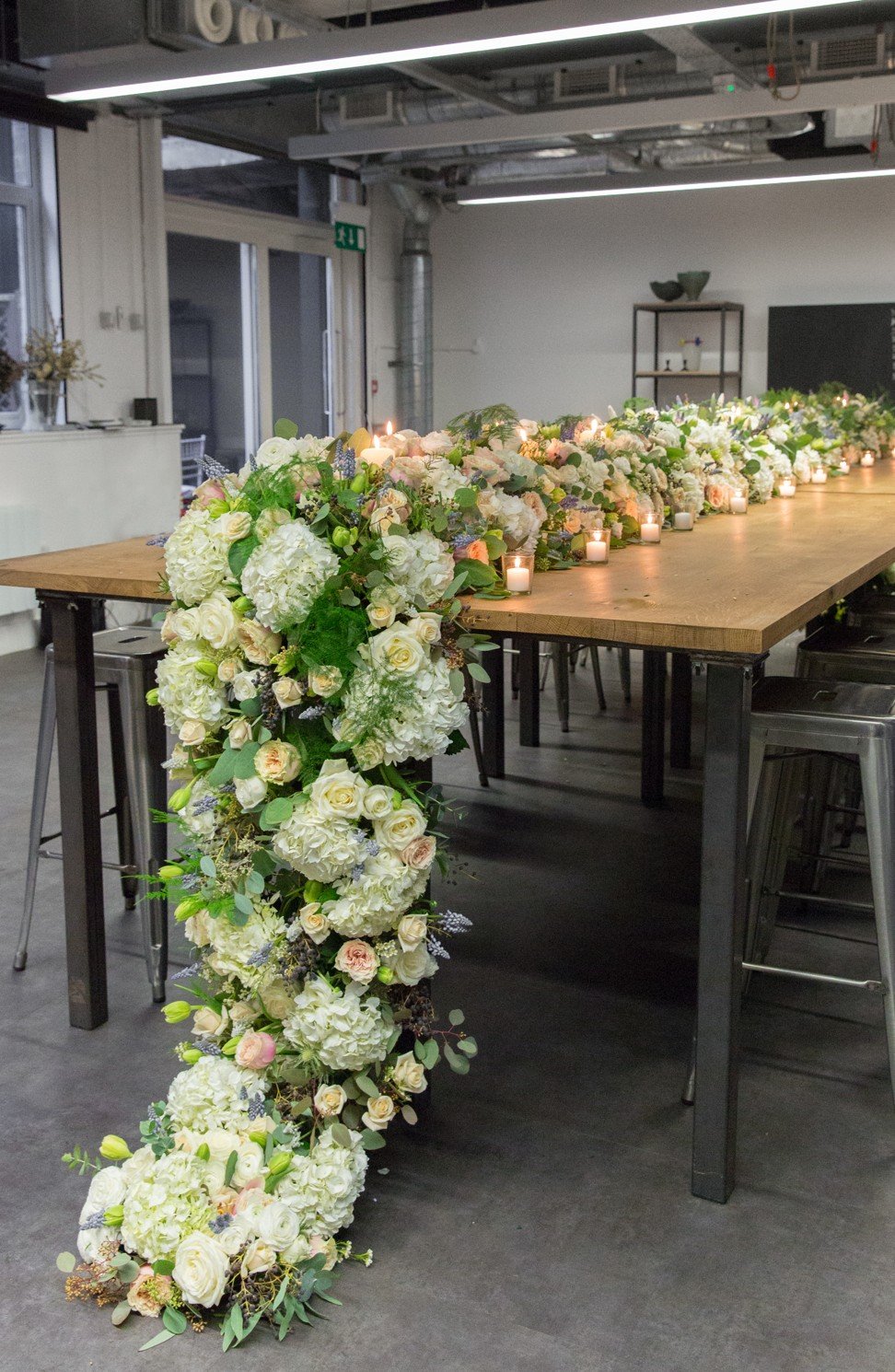
China’s budding florists are heading to London to earn their floral wings
The global capital of flower arranging is a magnet for young Asians with money to burn and business ideas ready to blossom

Britain is searching for an economic solution to Brexit. As it cuts ties with the European Union, the country’s brightest minds are trying to find a magic bullet to fix its fiscal woes. Cosying up to United States President Donald Trump? Embracing artificial intelligence? Or maybe cashing in on Prince Harry’s wedding to Meghan Markle?
If they want the economy to come up smelling of roses, though, perhaps there is an avenue they have missed: flower power.
It is an unlikely new trend – thousands of Hongkongers, mainland Chinese and Koreans flocking to the British capital not for its palaces, Madame Tussauds and afternoon tea, but to learn how to trim a tulip and display a delphinium.
The most striking example of this fragrant phenomenon is the London Flower School, which opened its doors in March. Its four-week Career Course promises to teach students everything from arranging table displays and taking perfect pictures to sorting spreadsheets and nailing social media, all the while aiming to foster “artistry not mimicry”. As you might expect, the bulk of its students are female but, more surprisingly, most of them hail from Asia.

The former primary school teacher, 49, was uninspired in her job and signed up to a number of short floristry courses. “I found that they weren’t being taught very well – because these people could do, but they couldn’t teach.”
She discussed this with one of the rare teachers who couldteach, 32-year-old Brazilian Wagner Kreusch, a former graphic designer. He was head tutor at the prestigious McQueens school, in East London, and visiting tutor at China’s leading flower academy, Cohim, in Beijing, before he teamed up with Dyson to establish their own institution.
One of the first things they did was book a whistle-stop promotional trip to Asia.
“We did a crazy tour of Japan for two days, two days in Korea and then five days in Beijing,” Dyson says.
“There was always a big interest from Asia in general,” Kreusch explains. “There was a time when a lot of Japanese people were coming to London [...] But then we started to get a lot of Chinese students.”
Dyson says the relative ease of getting visas to study in Britain has contributed to the boom, but adds: “What we found is that the Chinese were incredibly hungry for learning, for new businesses, and it was incredibly exciting to go there because they were very open to every aspect of our business, or any new opportunity.”
There is this lifestyle thing they’re after ... there is a certain amount of wealth and these young people want to spend it like [they do in] this Western world that they see in magazines
Language can be a barrier. “We have some Korean and Chinese students who don’t speak English,” Dyson says. “But the class is demonstrations. So, of course, they miss a part of it, perhaps the business side of it. But the flower bit, I think, is a universal language.
“We had one guy who came from Korea who didn’t speak any English whatsoever, which takes a lot of courage. And we work very hard to make sure everybody has a wonderful time. We use Google Translate for my boring business stuff.”
An interpreter is hired if an entire group comes together for, say, the Chelsea Flower Show, in May.
The four-week London Flower School experience does not come cheap, however. Including course fees (of £5,200/US$6,930), flights and accommodation, an Asian student is unlikely to get much change from HK$100,000. But that does not appear to be putting people off, either.
“There is this lifestyle thing they’re after,” Dyson says. “When we were talking to a British representative for businesses in China, he was saying there is almost a debutante community, where there is a certain amount of wealth and these young people want to spend it like [they do in] this Western world that they see in magazines.”
The name they chose for the school, Dyson says, was a result of “more luck than judgment”. But, in the era of Google, it turned out to be a fortuitous choice.

“London flower school” just so happens to be the phrase Kacey Chan Ka-lam – favourite flower, hydrangea – typed into her laptop as she sat in her Causeway Bay home dreaming of rosy learning opportunities abroad. The 29-year-old, who works as a sales associate for a luxury leather brand, indulges her love of foliage by making regular jaunts to the Hong Kong Flower Market to pick blooms for her home-made arrangements.
“This is how I got interested in flowers,” says Chan, during lunch break at the school, in London’s trendy Kings Cross. “I would go to the market on my day off. I’d make bouquets myself – I researched how to wrap them on the internet and learned from YouTube. I made a different one every week. But I’m not a professional yet – that’s why I’ve come here. I’ll start working professionally maybe in a year.”
After finding the school on Google, she turned to Instagram (her own bio on the site reads “MUST HAVE FLOWERS ALWAYS AND ALWAYS”) to research global variations in floral design. She settled on London because of “just the feeling – I like the simple style; not too much”.

Fellow florist-to-be Sue Chan Tim-shu – favourite flower, ranunculus – says her love of all things British, the brands Jo Malone, Burberry and Topshop foremost among them, extends to the country’s floral displays.
“Well, honestly, I did compare, and researched schools in Paris, London, Korea and New York,” says the 33-year-old executive finance assistant from Tung Chung. “I personally like the British arrangement style. Always elegant design – always! The curve, the line is always simple but elegant. From what I’ve learned so far, I feel it’s more natural, instead of very bold, concrete, solid shapes. And also more contemporary.”
One of the school’s key courses covers the work of Constance Spry, the first celebrity florist, who designed the flowers for Queen Elizabeth’s coronation, in 1953. “At the time,” Dyson says, “floristry was not seen as an art form. It was seen as, you know, you get flowers for your funeral. She helped change that.”
Another session is on ikebana, the Japanese art of flower arranging, one of many methods the course covers.
“Trends will happen, as in fashion, as in any industry,” Dyson says, “but what we found incredibly important is that everybody learns everything.”
“There is no London Flower School style,” Kreusch adds. “Our aim is to help students create their own style. [They will] need that to survive in the market.”

When I join Sue and Kacey for their afternoon class in the basement, I am tasked with helping them to produce a “low and long” table arrangement. This may sound mundane but by the time the students are finished, they have expended more than 1,000 stems – including Colombian hydrangeas, vendela roses, grape hyacinths, heleniums, ranunculi, tulips and eucalyptuses – to create a candle-studded centrepiece that would not look out of place at a royal wedding.
I don a crisp, white, LFS-branded apron, brandish a pair of bright yellow secateurs and learn how to blow into a rose to open the flower and how to remove unsightly guard petals before plunging the stems into chunks of oasis (the foam blocks stems are stood in).
Chinese students are coming here to learn everything they can, from farming and the growing process of fine roses through to wholesaling of flowers, packaging and, of course, floristry
The class feels like an oasis in itself and I start to see what all the fuss is about. “You’d be surprised,” Dyson says. “You have 15 people downstairs and you can sometimes go into that room and it’s absolutely silent. It is almost therapy.”
Katie Nannestad, LFS chief operating officer, observes, “The thing that I find interesting is the amount of positivity in the room from the outset. You don’t get grumpy people arranging flowers, it just doesn’t happen.”
The classroom is sweet-scented, of course, and a Spotify playlist carefully curated by Dyson provides a soothing soundtrack.

As he puts together a display in a white urn, he endlessly twists the lazy susan on which it sits, before removing a couple of stems. “I’m not convinced about these berries,” he says, disapprovingly, before warning, “Don’t cover every gap – that kills the arrangement!”
The British approach offers a refreshing contrast to what Sue Chan says is the predominant fashion in Hong Kong: “Right now, they’re under the influence of the Korean style. It’s more natural, also simple, but they focus on the packaging – how to wrap the flowers, the paper, the ribbons. For me, the Korean way is all about the package rather than the flowers.”
Like Kacey, Sue’s preoccupation with chic luxury is also evident on the Instagram page she uses to update friends back home on her London creations (“Every day! It’s my homework!”). On her profile, she quotes Elsie de Wolfe, an American interior designer and author of 1913 book The House in Good Taste: “Be pretty if you can. Be witty if you must. But be gracious if it kills you.”

At home, she says, she uses the platform to keep an eye on her favourite London creatives, such as Belgravia-based cake parlour Peggy Porschen (@peggyporschenofficial), which she loves for the “very eccentric, but very nice” flower-festooned pink bicycle by the window, and “event imagineer” Tony Marklew (@tonymarklew), who has 39,000 people following his epic petal-strewn installations.
This is Kacey’s fourth trip to the city and Sue’s second (her first had been to do another course on floristry, and she only booked this one a matter of days before it started). After she has earned her certificate, she’s heading to Paris (taking in the displays of Galeries Lafayette) and Amsterdam (the Tulip Museum and Bloemenmarkt floating flower market).
It may be costing them a small fortune, but the pair point out that flower arranging in Hong Kong isan expensive hobby: a hydrangea imported from Holland that in Britain may cost the equivalent of HK$50 could set you back HK$250 in an upmarket Hong Kong store.
“So it’s a big treat,” Sue says. “For Mother’s Day, I devote my weekend to shopping. I make three bouquets: one for my mum, one for my mum-in-law and one for my sister, who’s also a mum. So it’s really a big chunk of money. But also weekly, I treat myself. Just a little bouquet at home is nice. I mix everything. Texture! Texture is important.”
Their creations at the school certainly have the wow factor. The more basic designs include a simple hand-tied peach amaryllis bouquet, a sunflower-and-oak-leaf wreath and a mixed-rose flower crown. Later weeks see them churning out a snake of violet hydrangeas that winds its way up a candelabra, a 10-foot autumnal flower arch, a flower wall, a flower staircase and a chandelier made purely of petals.
The London Flower School is not the only beneficiary of the Asian invasion. Jamie Aston, who is “widely considered to be the leading florist of his generation” – or so his website says – and runs a school in London, recently opened the first independent Western flower school in Seoul, South Korea, and has plans to expand into Hong Kong and Japan.
He tells Post Magazine that, at his classes in the British capital, “Asian students make up the majority. Last year, we would have passed on our knowledge to more than 280 students from across Asia. British students are by far the minority.”

Aston, who visits Korea and China every six months, says that for the past three years, students coming from China have outnumbered those from Japan for the first time. He adds, “the choice between English courses or flower arranging, I think, is an easy one for many”.
“Chinese students are coming here to learn everything they can,” he says, “from farming and the growing process of fine roses through to wholesaling of flowers, packaging and, of course, floristry. Everything, it seems, is a new concept and very exciting. Many of our Chinese students go back home and open flower companies quite quickly.
“Although they are able to grow [flowers] themselves en masse, the quality and choice is limited. The potential they see here will change the flower wholesale process in China. They are also working on how to transport flowers across China effectively – at present, there is no guaranteed logistical method florists can trust.”
Hong Kong and other Asian territories may well be headed for a horticultural renaissance. However, for the time being at least, Kacey, Sue and budding florists like them are very much ahead of the curve. “Among my friends, I am the unique one,” Kacey says.
Even at Hong Kong weddings, says Sue, flowers still tend to be the bridesmaid of the event organiser’s decorative armoury. “Maybe you’ll just have the bouquet and buttonholes. The other decorations would be some printing – the couple can design their own logo and a printing house will produce a whole banner as a backdrop.
“I think it takes time to grow [an appreciation of floral arrangements]. It’s becoming more trendy but it takes time.”
Kacey adds, “Hong Kong does not really provide many schools or training in floristry. There are one-day or two-day workshops but not a proper curriculum. That’s why we have to look outside.”
Expect to see their new businesses blossoming soon.